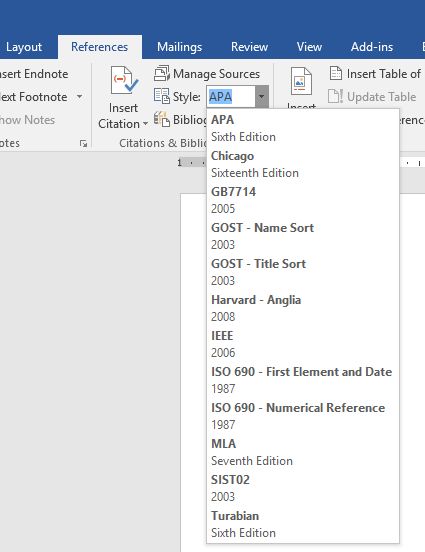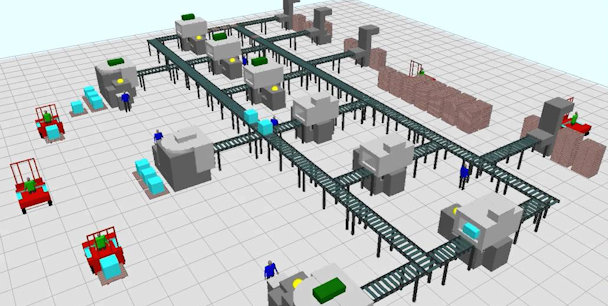Writing professional reports is a must requirement for all engineers
General Report Organization
Many of you will seek either temporary or permanent jobs where you will ask by your potential employer for examples of your achievements. The ability to produce a neat, concise, accurate report to show the employer is a powerful statement. If your plans for the future include attending graduate schools, the value of these reports is immense in illustrating your research and graduate work potential.
Report writing skills for an engineer is a must. The practicing engineer is struck with a never-ending stream of reports to sponsoring agencies, division heads, customers, etc. Your presence in this class implies that you may have taken few other courses that required report writing. However, sometimes you need to send files attached to emails or share them on the cloud as regular submission. Please note that only hard copy reports are graded and files sent by email or shared drives are required for verification of the work. Thus, it is the quality of the report that determines the grade for that report.
In general, the report should address itself to the following question:
What was to be done? This should be a brief outline of the problem and any additional information such as special techniques and goals. In writing this section, give a brief overview of the problem, but most importantly, point out the important issues it is dealing with. This should be brief but not just a repetition of what is in the original problem statement.
How was it done? This section should have a general statement of your design philosophy, how did you go about solving the problem. Basically, this section would describe how you planned to carry out the experiment and why would it work. This does not mean that you should include step by step calculations, but instead requires the description of ideas and methods used to meet the goal. The discussion in this section should include a images, charts, and drawings with explanation of the parameters used for each node.
What were the results? This section should include the result of your with proper sections high-lighted and associated variables identified with their proper names.
What was learned from the results? In this section you should analyze the results and summarize your report. Results should be analyzed in view of whether or not they point out the important aspects of the problem. A part of this discussion is related to whether the results make sense or not and how well they demonstrate the behavior of the system. When results do not match the expected outcome, the problem could be in one of many areas:
- Incorrect input values: Check to make sure all numbers, and values were entered correctly with proper decimals when they are values, and names when they are variables.
- Incorrect assumptions: Check to make sure that the model accurately reflect the assumptions given in the problem.
- Incorrect approach: If the above two checks can not detect the source of the error, the problem might be in the logic and the method that you used to come up with your solution. This requires that you rethink your solution approach and modify it appropriately.
Keep in mind that your report must be concise and clear. You should not assume that you are writing the report only for the instructor, but rather for the world. So, if you are stating a fact that your instructor discussed it during a class or lab session, make sure to explain it properly. Make sure that your report comes in logical order and the material smoothly flows from section to section. You should also be keenly aware of the copyright issues. Make absolutely sure that all statements from other resources are given credits to the original source(s) and author(s).
One final word about report writing, it is extremely important that your report be professionally done. All reports should be neat, precise and concise and must show clearly what and how was done. All figures, diagrams, graphs and tables should be properly labeled. You have access to a digital camera and a scanner. You can take pictures or scan them from books, journals, etc. to include in your report if necessary. If you need help with image processing see me. Please do not hesitate to ask questions, and consult this page often to make sure that your reports are in appropriate format. Finally, make sure to read the other sections below about homework reports, style compliance and plagiarism that will help you to produce professionally written report.
Homework Reports
Homework reports do generally follow above guidelins, but sometimes they are not design oriented and mostly follow a procedural format. For example, you might have an assignment to solve a problem that might only need using formulas to find its solution. In such cases, you would still follow the same steps mentioned above, but maybe not elements of it need to be present in the report.
In presenting the solution to a math problem, for example, usually you are applying formulas to solve the problem. You should mention the formula, you are using and show the calculation steps and explain those steps. Sometimes, you have to repeat the same step several times such as some problems in Operations Research class, in those situations, explain one step completely and then mention that other steps are similarly performed. Remember to write the short form of the results for each step before writing the final results obtained from last step. If you use a computer program to obtain the results then mention it and submit the file in its original form through email to for verification.
Sometimes the entire homework uses a software. For example files generated on a CAD or a simulation sotware. In such case the hard copy report still have to be submitted with explanation and either direct print of the models from those software or a screen capture of different steps you used to complete the assignment. Again, I need to stress that what is graded is the report, the computer file is only for verification. Therefore, you need to make sure that both are submitted before the deadline and the images and explanations in the report correspond to the file which has been submitted.
APA Format Compliance
The Industrial and Systems Engineering Department has adopted APA format and style for student research and lab report. As such, I am requiring all work submitted be in compliance with major portions of the APA style. The specific sections of interest are in-text citations, references, charts, images, and tables use in the main body text. If you are using Microsoft Word© under References ribbon you can select the APA style for your report.

Purdue University Writing Lab has an excellent Web site with all details and exmples that are very helpful.
There are also free APA citation machines on the Web that you may use. Here is a page with links to several citation tools.
Below is a short form of the general guideline adapted from verywell.com site by Kendra Cherry.
"APA format is the official style of the American Psychological Association (APA) and is commonly used to cite sources in psychology, education, and the social sciences. The APA style originated in a 1929 article published in Psychological Bulletin that laid out the basic guidelines. These guidelines were eventually expanded into the APA Publication Manual.
There are other styles guides such as MLA or Chicago style but many university-level classes require APA style. Getting a solid grasp of the basics and bookmarking a few key resources can make learning this new format a bit easier.
Sections of Your Paper: In most cases, your paper should include four main sections: the title page, abstract, main section, and references list.
Title Page: Your title page should contain a running head, title, author name and school affiliation. Learn more about writing an APA format title page. Please note that in my classes we use a specific format page.
Abstract: An abstract is a brief summary of your paper that immediately follows your title page. According to APA format, your abstract should be no more than 150 to 250 words although this can vary depending upon the specific publication or instructor requirements. Please note that In my classes we do not use abstract page for reports.
The Main Body: For something like an essay, the main body of your paper will include the actual essay itself. If you are writing a lab report, then your main body will be broken down into further sections. The four main components of a lab report include an introduction, method, results, and discussion sections.
References: The reference section of your paper will include a list of all of the sources that you used in your paper.
In-Text Citations: When citing in APA format in the text of your paper, use the author's name followed by the date of publication. For example, if you were to cite Sigmund Freud's book The Interpretation of Dreams, you would use the following format: (Freud, 1900). The extended information on the source should then appear in your reference section.
Reference Pages: Your references should begin on a new page. Title the new page "References" and center the title text at the top of the page. All entries should be in alphabetical order. The first line of a reference should be flush with the left margin. Each additional line should be indented (usually accomplished by using the TAB key.) While earlier versions of APA format required only one space after each sentence, the new sixth edition of the style manual now recommends two spaces. The reference section should be double-spaced. All sources cited should appear both in-text and on the reference page. Any reference that appears in the text of your report or article must be cited on the references page, and any item appearing on your reference page must be also included somewhere in the body of your text. Titles of books, journals, magazines, and newspapers should appear in italics."
Plagiarism
Plagiarism is a serious issue that affects everyone involved. It is discussed as part of the Academic Dishonesty Policy contained in pages 35-38 under Academics section of the university catalog. It is strongly recommended that you study the document and understand the consequences of certain actions that you might feel not to be of a serious nature. Although the policy covers numerous serious issues, the plagiarism deals specifically with report writing. The policy defines plagiarism and states examples of the cases that are plagerized. It is reprinted here for your information.
"Plagiarism is theft. Plagiarism is submitting, either orally or in writing, the words, ideas, drawings, or other works of another person
as one’s own without appropriate citation in order to receive credit for having completed an academic assignment or exercise.
Examples of plagiarism include, but are not limited to, the following:
a. Submitting material or work for evaluation, in whole or in part, which has been prepared by another student, an author of a published article or textbook,
or by persons producing papers for profit;
b. Using a direct quotation from another student’s papers or from an author of a publication without including the appropriate citation;
c. Paraphrasing or summarizing another’s work without including the appropriate citation; and,
d. Using information stored electronically, e.g., submission of papers and or information found on computer disks, the Internet, etc.,
without including appropriate citation and/or acknowledging the source specific policies are base


